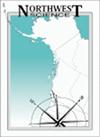Riverscape View of Fish Assemblages, Habitat, and Stream Temperatures during Summer Low Flows in the Chehalis River, Washington
IF 0.5
4区 环境科学与生态学
Q4 ECOLOGY
引用次数: 2
Abstract
Abstract The Chehalis River is a coastal river in southwestern Washington State where decision makers are considering options to reduce flood damage and improve freshwater habitats. This study focused on the mainstem river above and below the location of a potential dam, one of the flood-reduction options being considered. Our objectives were to describe spatial patterns of fish species, physical habitat, and stream temperature, and identify associations between fish species and the physical environment at two spatial scales. Data were collected in spatially continuous reaches following a “riverscape” approach, and patterns in the data were described using three different ordination techniques. Most of the variation in fish species composition occurred at the sub-basin scale (entire study area), with additional but minor patterns at the reach (1-km) scale. At the sub-basin scale, fish species composition was organized in an upstream (salmonid) to downstream (cyprinid) replacement pattern and was best explained by the combination of river location, habitat, and temperature. At the reach scale, physical habitat and stream temperature differentiated juvenile trout versus coho salmon in the salmonid-dominated upstream extent of our study area, and dace versus shiner in the cyprinid-dominated downstream extent. We conclude that salmon and steelhead are particularly vulnerable to habitat loss upstream of the proposed dam because they disproportionately use this area as summer rearing habitat. Protection and restoration of headwater areas, such as our study area in the Chehalis River, will be critical to support salmonid populations into the future.华盛顿州切哈利斯河夏季低流量期间的鱼类组合、栖息地和溪流温度的河景视图
切哈利斯河是华盛顿州西南部的一条沿海河流,决策者正在考虑减少洪水破坏和改善淡水栖息地的选择。这项研究的重点是潜在水坝位置上下的主河,这是正在考虑的减少洪水的选择之一。我们的目标是在两个空间尺度上描述鱼类、自然栖息地和河流温度的空间格局,并确定鱼类与自然环境之间的联系。采用“河流景观”方法在空间连续河段收集数据,并使用三种不同的排序技术描述数据中的模式。鱼类组成的变化主要发生在亚流域尺度(整个研究区),河段尺度(1 km)有少量变化。在亚流域尺度上,鱼类组成呈上游(鲑科)向下游(鲤科)交替的格局,可以用河流位置、生境和温度的组合来解释。在河段尺度上,研究区以鲑鱼为主的上游区域存在鳟鱼幼鱼与银鲑的差异,以鲤为主的下游区域存在鱼幼鱼与银鲑的差异。我们得出的结论是,鲑鱼和钢头鱼特别容易受到拟建大坝上游栖息地丧失的影响,因为它们不成比例地将这一地区用作夏季养殖栖息地。保护和恢复源头地区,如我们在切哈利斯河的研究区域,将是支持鲑鱼种群走向未来的关键。
本文章由计算机程序翻译,如有差异,请以英文原文为准。
求助全文
约1分钟内获得全文
求助全文
来源期刊

Northwest Science
环境科学-生态学
CiteScore
1.30
自引率
0.00%
发文量
23
审稿时长
>36 weeks
期刊介绍:
The pages of Northwest Science are open to original and fundamental research in the basic, applied, and social sciences. All submissions are refereed by at least two qualified peer reviewers. Papers are welcome from authors outside of the Pacific Northwest if the topic is suitable to our regional audience.
 求助内容:
求助内容: 应助结果提醒方式:
应助结果提醒方式:


